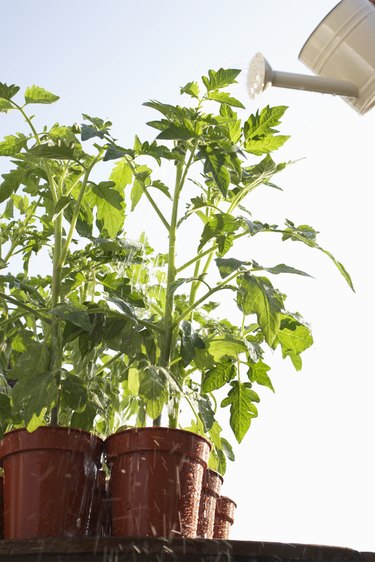 Help remove moisture from an over watered plant.
Help remove moisture from an over watered plant.
Over watering is the leading cause of death in houseplants, according to university extension horticulturalists. In many cases, an over-watered plant begins losing new and old leaves at the same time. Some of its leaves will also develop brown spots and black leaf tips. In extreme cases, an over-watered plant can become moldy and fungus may begin growing in its soil. Once you recognize the symptoms of over watering, it is important to dry out the plant as soon as possible. The longer the plant remains over watered, the more it suffers.
Video of the Day
Step 1
Stick your finger into the soil surrounding the plant to check the moisture level. From the feel of the soil, you should be able to tell if the soil is really wet, moist or dry.
Step 2
Place an over-watered plant where it will receive maximum sunlight. The more light the plant receives, the more quickly excess water will evaporate from it.
Step 3
Empty the plant pot's liner if standing water appears in it. This prevents the excess water from being absorbed back into the soil. It also allows for more excess water to drain into this liner. As this occurs, continue emptying water from the liner.
Step 4
Empty any water out of a decorative vase or pot, if using one for your plant. Do not allow water to stand in the saucers of plants in pots with drainage holes.
Step 5
Force excess water out of the soil by gently pressing down on it. Then dump the excess water out of the pot.
Step 6
Consider re-potting the plant to give it a fresh start. If the over-watered plant has begun suffering from root rot, cut these damaged sections of roots off before replanting it. Rotting roots are indicated by a soft, mushy texture.


